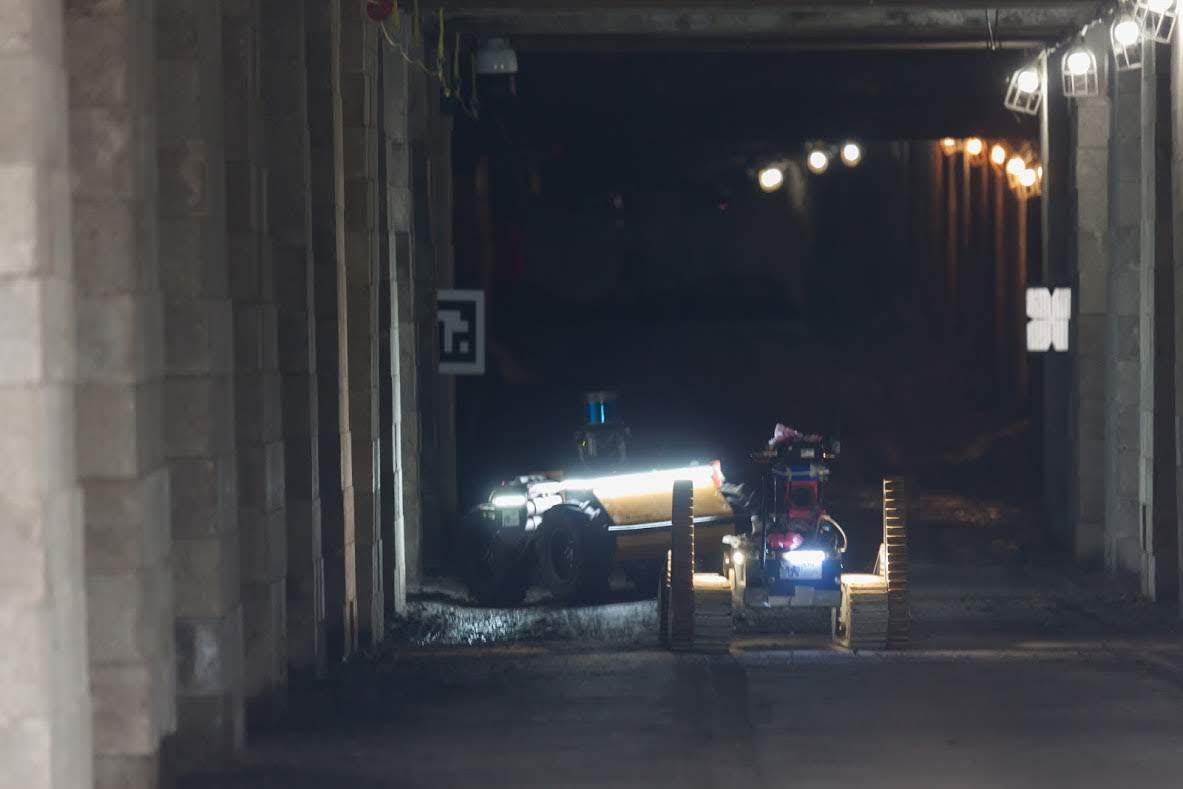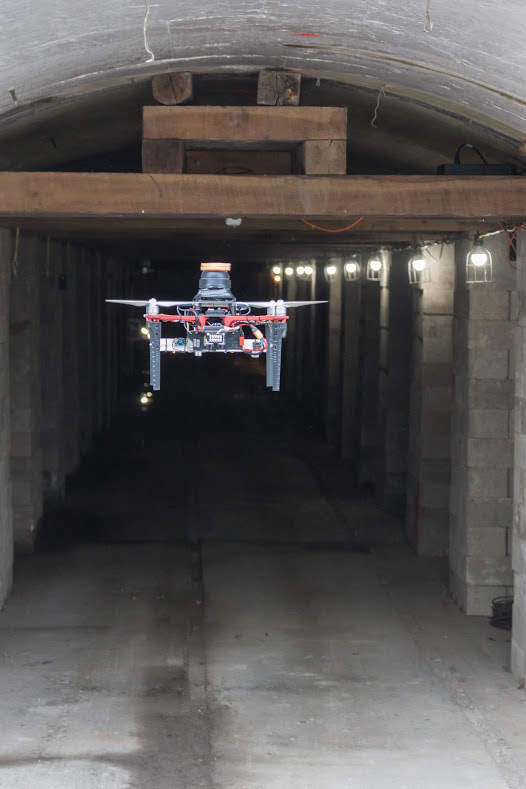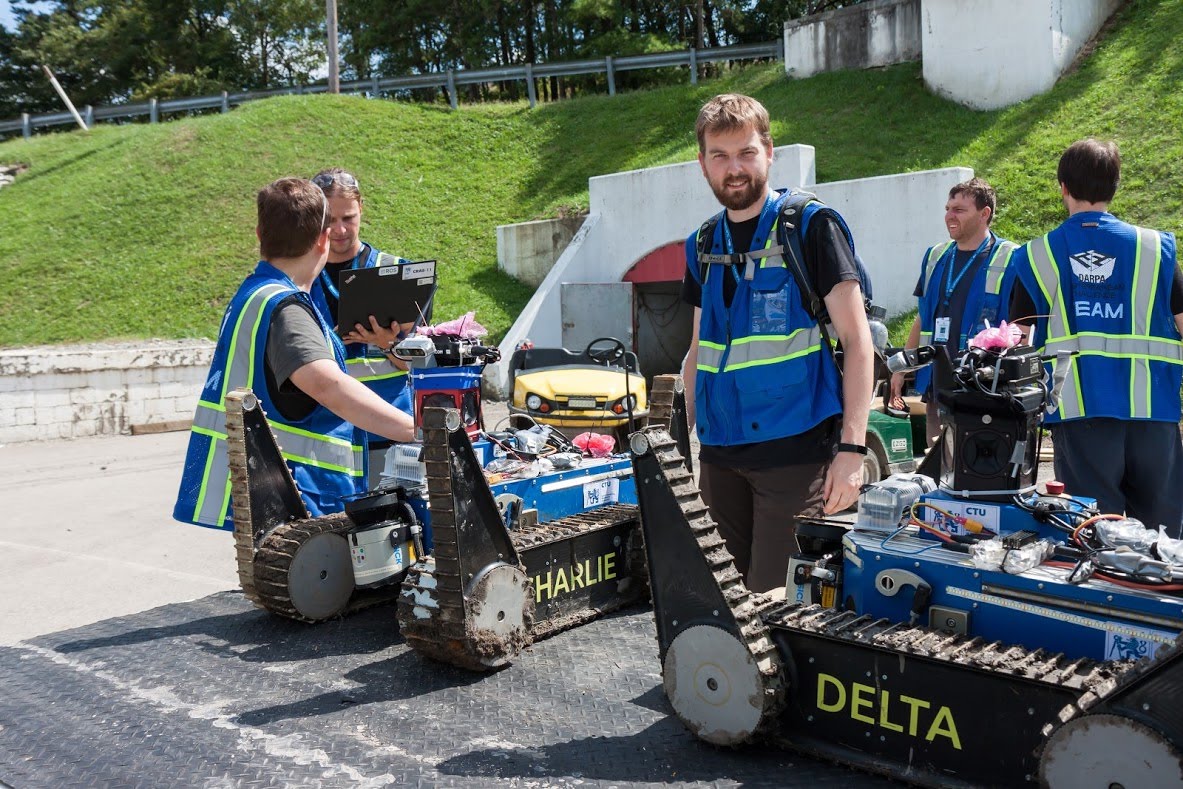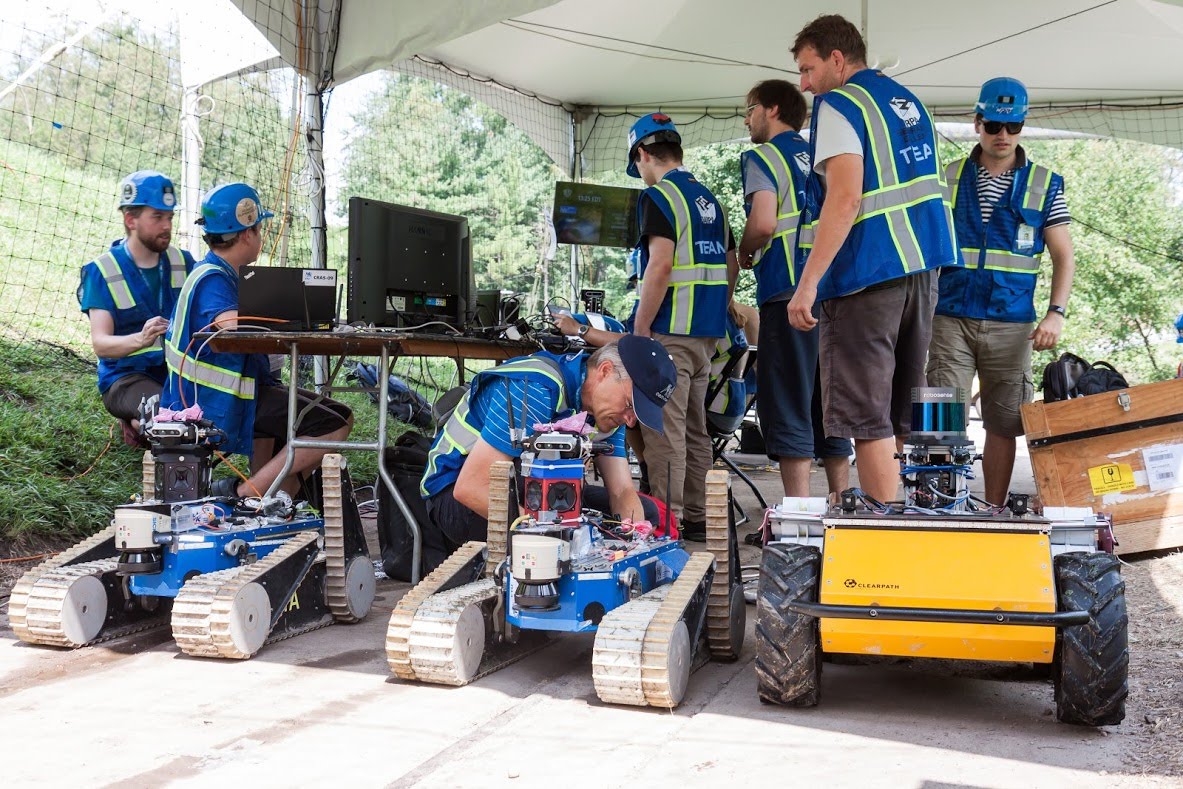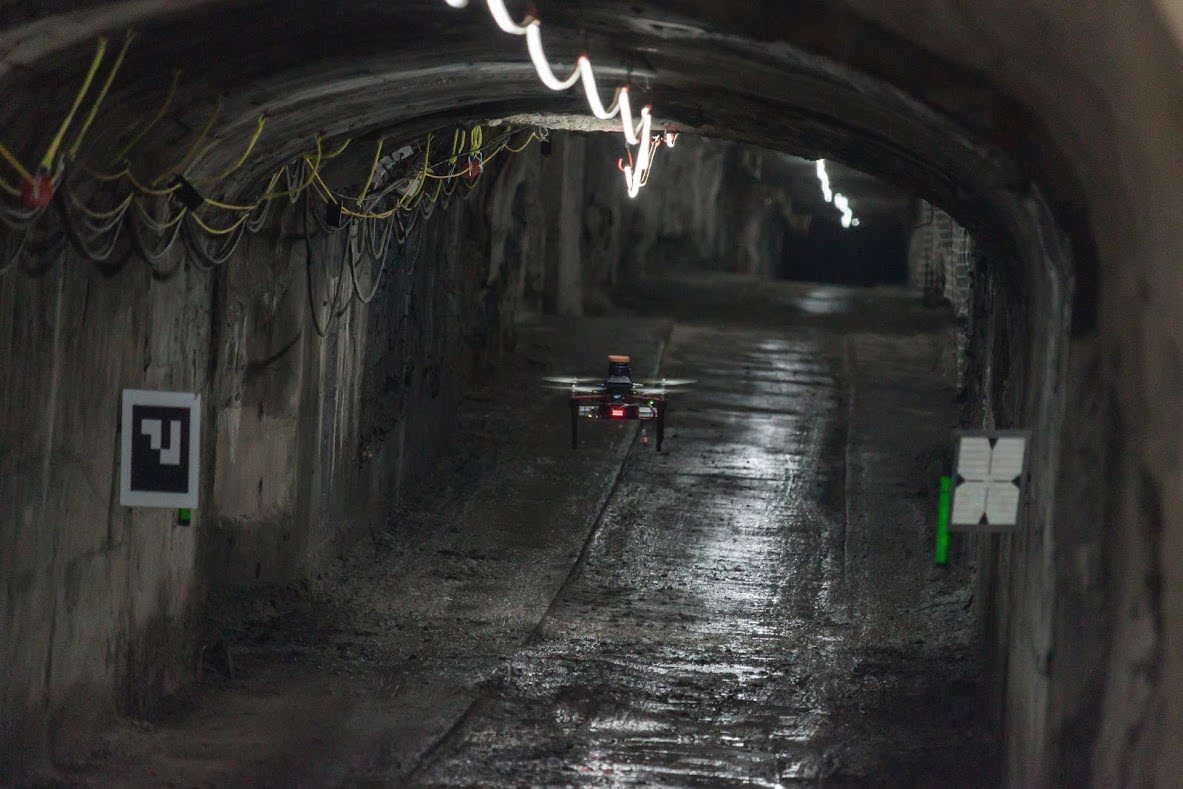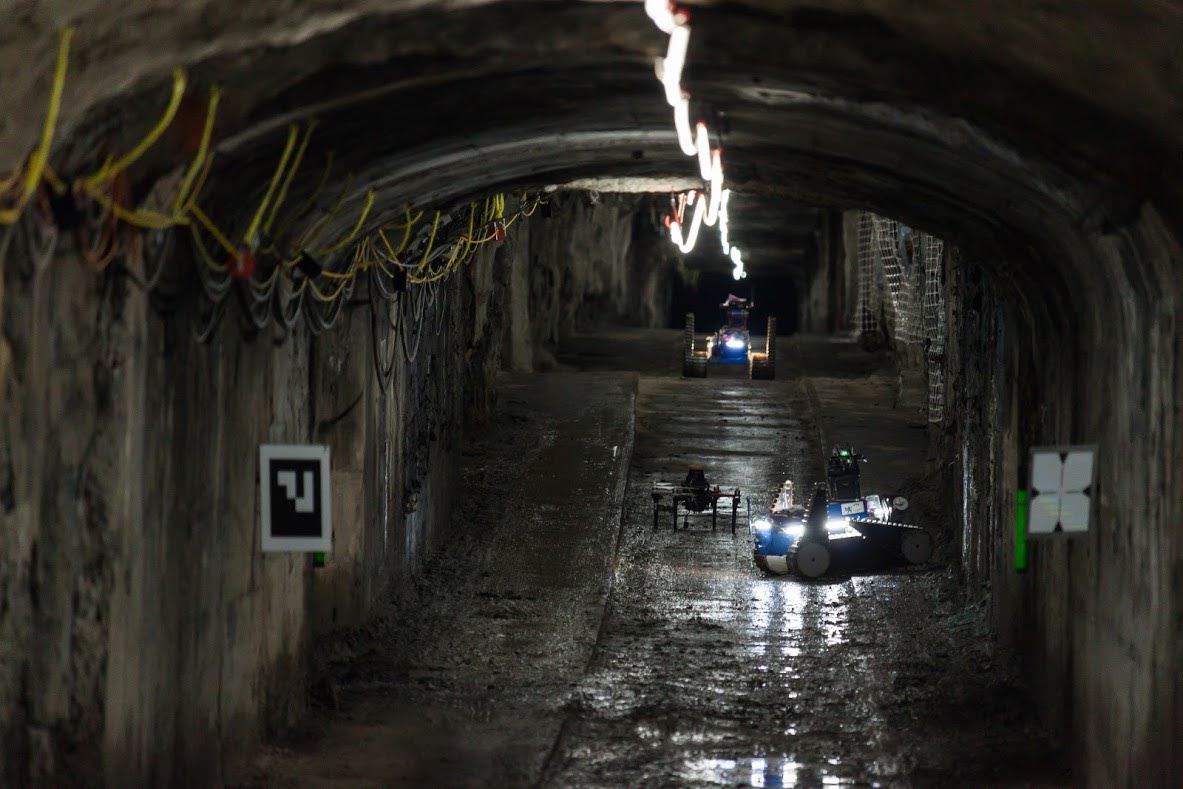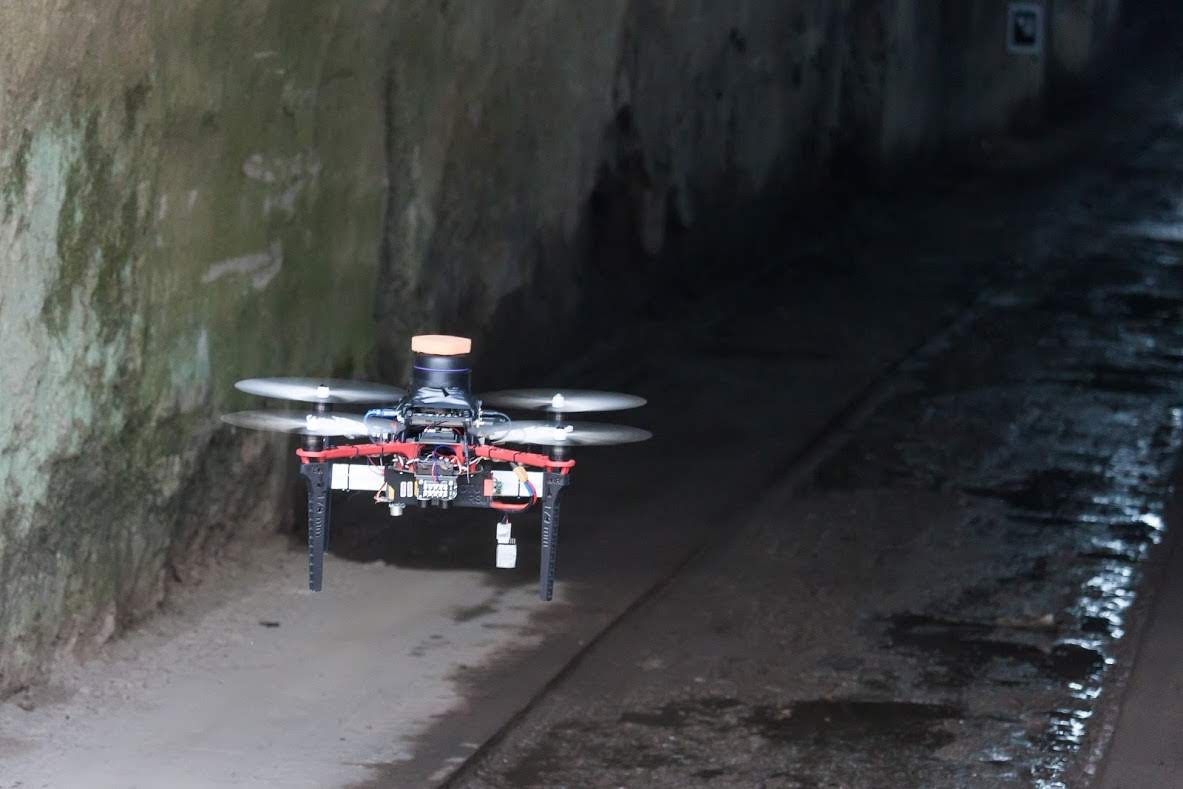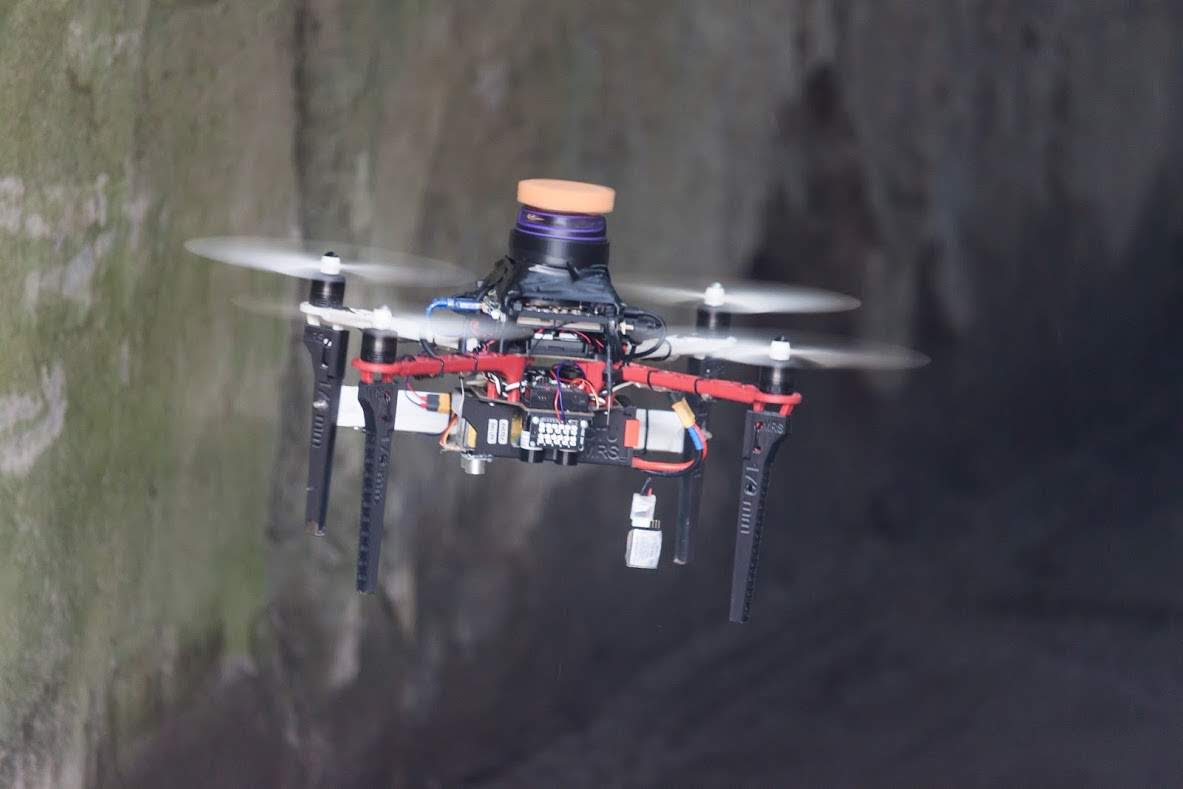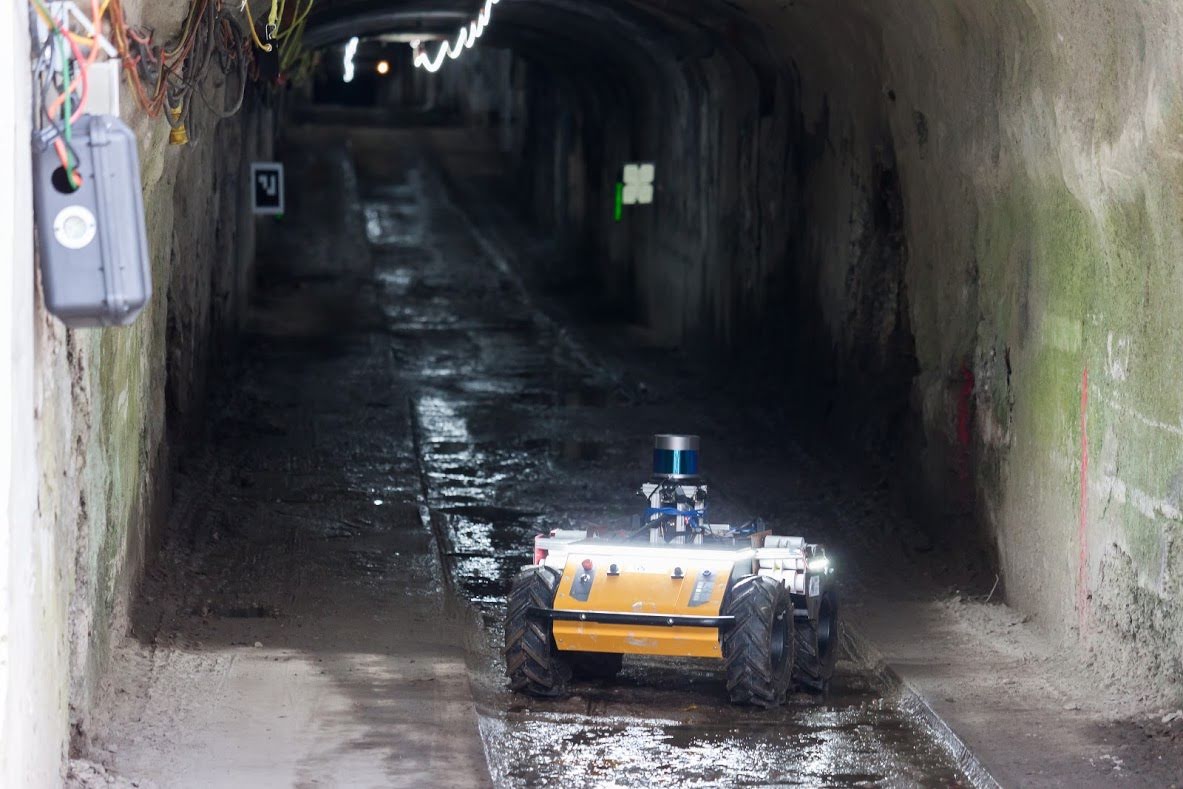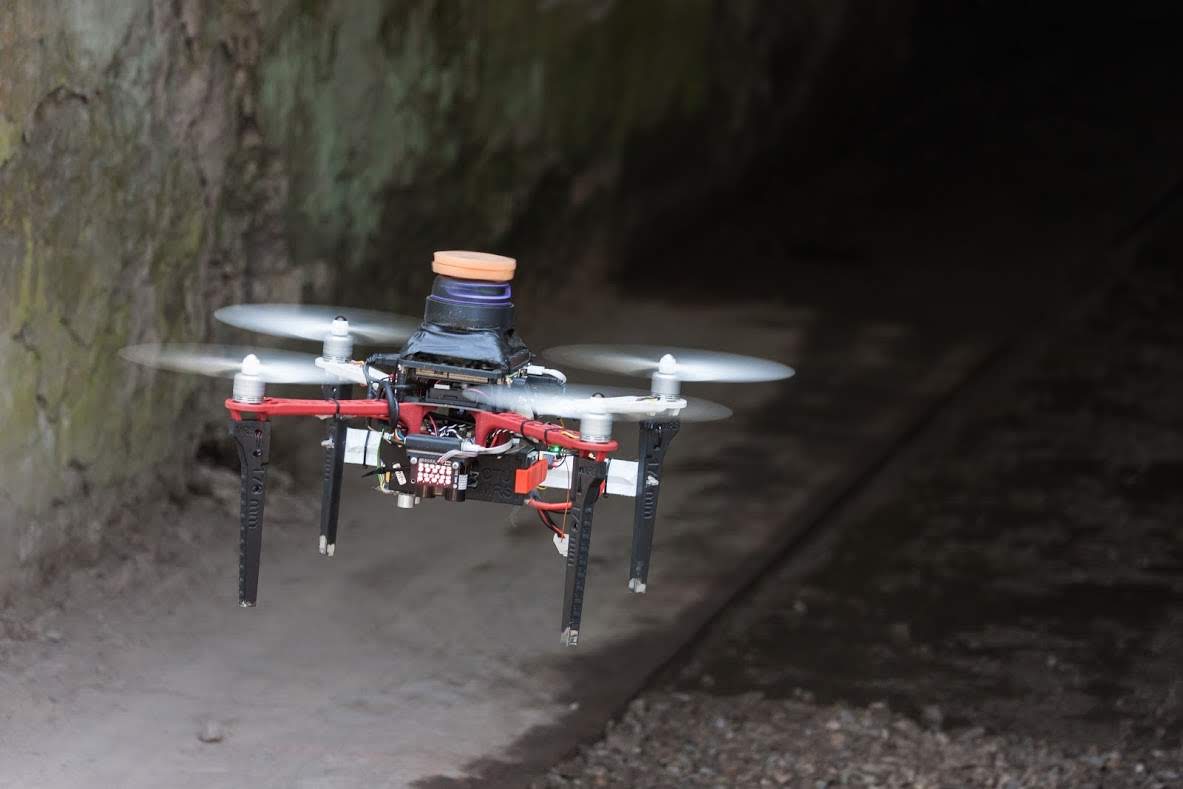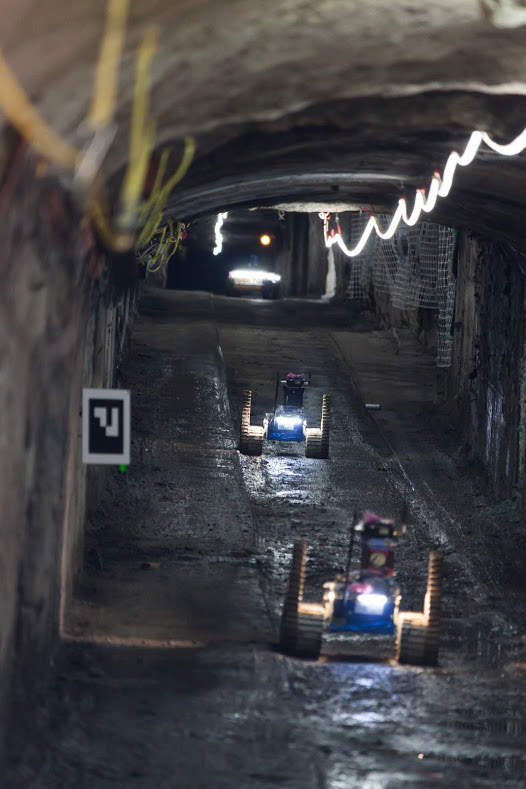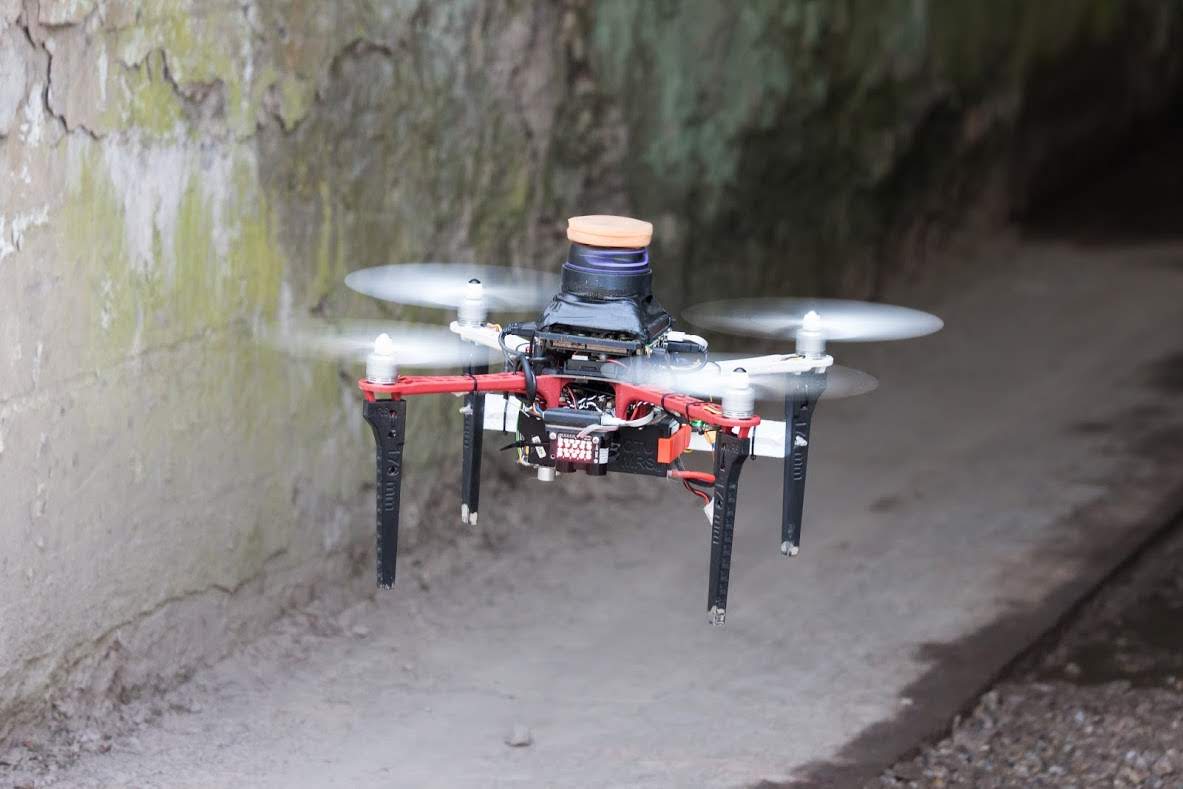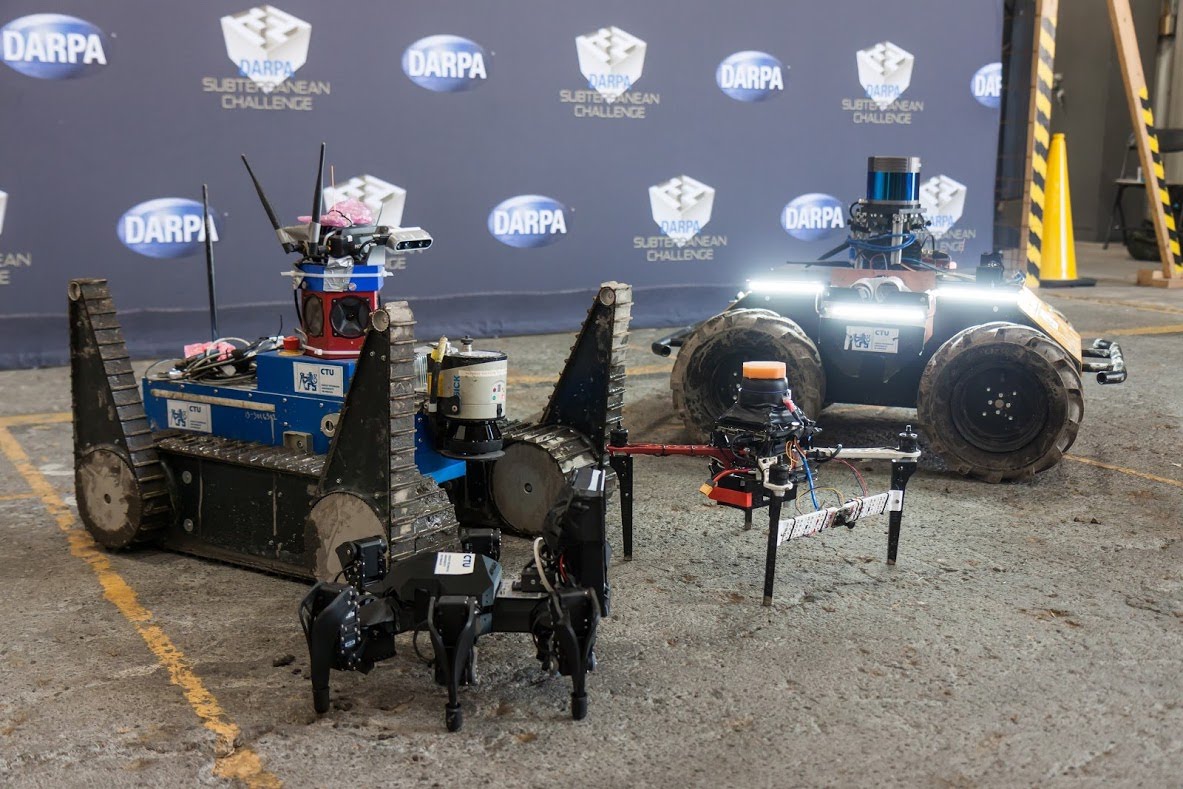CTU-CRAS from the Faculty of Electrical Engineering Won the Darpa Subterranean Challenge Tunnel Circuit Among Non-Sponsored Teams and Took the Overall 3rd Place
The DARPA Subterranean Challenge Tunnel Circuit took place in Pittsburgh, USA on 15-22 August. A team of CTU-CRAS scientists and students from the Department of Cybernetics and Computer Department of the Faculty of Electrical Engineering of the Czech Technical University in Prague demonstrated a multirobotic system for searching the areas affected by the disaster. CTU-CRAS took first place in the category for teams not supported by the Defense Advanced Research Projects Agency (DARPA) and ranked third overall.
The goal of the DARPA Subterranean Challenge is to test systems of autonomous cooperating robots who can explore underground spaces without human assistance. The August test focused on the ability of robots to find signs of the presence of buried miners in mines affected by natural disasters or industrial accidents. The US Department of Defense's Advanced Research Projects (DARPA) agency, which has an annual budget of $ 3.5 billion and which in the past initiated the development of autonomous cars and other advanced technologies that emerged on the market after these competitions.
DARPA competitions move research results towards industrial application. In the past, this was the case with the Grand Challenge in the field of autonomous vehicles.
In real conditions at Pittsburgh's coal mine, the CTU-CRAS team matched the world's top teams, including MIT, ETH, JPL, CSIRO, outperforming most of them and winning $ 200,000. The decisive part of the robotic team consisted of ground terrain robots, with which we have long-term experience both from European projects and from real exploration missions. Deployment of these robots was crucial for success, they precisely located themselves, were able to autonomously explore the terrain, enabled setting up of a wireless network and send accurate information to the operator about the map and automatically found objects for which the team earned points.
Another important achievement was that our drones were able to fly over 200 meters in the mine and fly back and forth completely autonomously. In addition, the developed technology tested in such difficult conditions promises to be used in subsequent projects.
